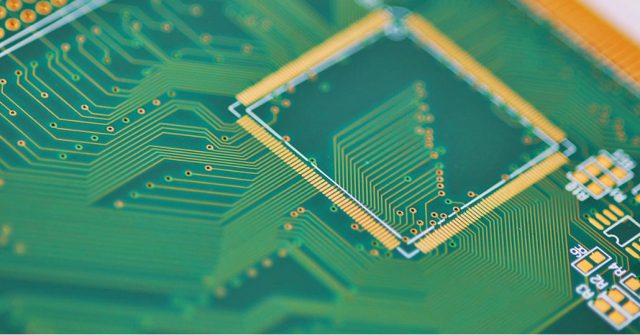1. Introduction
ITEQ IT-968 is a high-performance laminate and prepreg material designed for high-speed digital and high-frequency PCB applications. Engineered for ultra-low loss, high glass transition temperature (Tg), and lead-free assembly compatibility, IT-968 is ideal for advanced electronic systems such as 100G/400G switches, high-speed servers, telecommunications equipment, RF/microwave circuits, and automotive radar systems.
ITEQ IT-968 combines excellent electrical performance with robust mechanical and thermal properties, providing PCB manufacturers with a reliable substrate for demanding applications.
2. Material Properties Overview
| Property | Typical Value | Test Method |
|---|---|---|
| Dielectric Constant (Dk) @ 10 GHz | ~3.66 | IPC-TM-650 |
| Dissipation Factor (Df) @ 10 GHz | ~0.0050 | IPC-TM-650 |
| Glass Transition Temperature (Tg) | ~185°C | DSC |
| Coefficient of Thermal Expansion (CTE) | X/Y: 12/14 ppm/°C; Z: Alpha1 45 ppm/°C, Alpha2 260 ppm/°C | IPC-TM-650 |
| Thermal Decomposition (Td) | ~400°C | TGA |
| Flammability | UL94 V-0 | Standard Test |
| Mechanical Strength | Excellent | IPC-TM-650 |
| Moisture Absorption | <0.1% | IPC-TM-650 |
Key Features:
-
High Tg: Stable under high-temperature lead-free soldering processes.
-
Ultra-Low Loss: Maintains signal integrity at high frequencies.
-
Thermal and Mechanical Reliability: Resistant to thermal stress and environmental conditions.
-
Process Compatibility: Suitable for multilayer, through-hole, and surface mount assemblies.
3. Applications
ITEQ IT-968 is suitable for a wide range of high-performance electronics applications:
-
High-Speed Digital Circuits: Servers, storage systems, and 100G/400G switch solutions.
-
Telecommunications: Routing and switching equipment, base stations, and high-frequency communication devices.
-
RF and Microwave Circuits: Antennas, wireless systems, and radar applications.
-
Automotive Electronics: ADAS, engine control units, infotainment systems, and radar modules.
-
Aerospace and Defense: Avionics, satellites, military communications, and radar systems.
-
Industrial Electronics: Automation controllers, robotics, and power electronics.
-
Consumer Electronics: Smartphones, laptops, gaming devices, and wearables.
-
Medical Devices: Diagnostic and monitoring equipment requiring precision and reliability.
4. PCB Stack-Up and Design Considerations
To fully leverage IT-968’s performance, careful PCB stack-up design is essential:
-
Layer Count: Based on signal complexity and space constraints.
-
Signal Integrity: High-speed traces on inner layers; controlled impedance routing.
-
Power/Ground Planes: Minimize EMI and maintain voltage stability.
-
Layer Arrangement: Alternating signal and ground layers reduces crosstalk.
-
Dielectric Layer Selection: Optimize for impedance and signal performance.
-
Copper Weight & Thickness: Adjust for mechanical and electrical requirements.
-
Via Design: Use through-hole, blind, or buried vias depending on density.
-
Thermal Management: Implement thermal vias or heat sinks as needed.
-
Manufacturability: Ensure compatibility with drilling, lamination, and plating processes.
5. Fabrication Guidelines
5.1 Drilling
-
Tool Selection: Use carbide or twist drills optimized for ceramic-filled laminates.
-
Speed & Feed: 150,000–200,000 RPM; 2–3 mil/rev; retract 500–600 IPM.
-
Hole Preparation: Plasma desmear or chemical cleaning for clean PTH surfaces.
-
Cooling: Use water-soluble oil or PCB coolant to prevent heat buildup.
-
Deburring: Remove sharp edges to avoid signal reflection or soldering issues.
5.2 Lamination
-
Prepreg: RO4450F™ recommended for multilayer boards.
-
Temperature & Pressure: 425–450°F (220–230°C), 200–400 psi, dwell 60 min.
-
Uniform Pressure: Prevent warping or delamination.
5.3 Etching
-
Standard copper etching suitable, but tight controls required for fine-pitch RF circuits.
5.4 Solder Mask & Surface Finish
-
Use solder masks compatible with high-frequency laminates.
-
Surface finishes include ENIG, immersion tin/silver, or OSP.
5.5 Soldering
-
Lead-free compatible; follow controlled reflow profiles below Tg (~185°C) to prevent delamination.
5.6 Testing & Quality Control
-
Electrical: Impedance, frequency response, signal integrity testing.
-
Visual: Inspect for etching defects, delamination, or misaligned components.
-
Environmental: Thermal cycling and humidity tests for reliability assurance.
6. Comparison with Other PCB Substrates
| Feature | IT-968 | Typical FR-4 | Other High-Speed Laminates |
|---|---|---|---|
| Dk Stability | Excellent | Moderate | Varies |
| Dissipation Factor | Ultra-low (0.005) | Higher | Similar or lower |
| Tg | ~185°C | 130–140°C | 150–200°C |
| Mechanical Strength | High | Moderate | High |
| Lead-Free Compatibility | Yes | Limited | Yes |
| Cost | Moderate | Low | Higher |
Summary: IT-968 provides an optimal balance between high-frequency performance, thermal reliability, mechanical strength, and cost, making it ideal for modern high-speed, high-frequency PCB, and RF PCB applications.
7. Best Practices
-
Store laminates in a cool, dry environment to avoid moisture absorption.
-
Test fabrication processes on sample boards before full production.
-
Use precise drilling and lamination techniques for dimensional stability.
-
Avoid bending or excessive mechanical stress.
-
Incorporate thermal vias or heatsinks in high-power applications.
8. Conclusion
ITEQ IT-968 is a high-performance PCB substrate material designed for applications requiring high-speed digital performance, RF/microwave reliability, and robust thermal stability. Its ultra-low loss characteristics, high Tg, and lead-free compatibility make it an ideal choice for telecommunications, automotive, aerospace, industrial, and consumer electronics applications.
By carefully designing the stack-up, controlling fabrication parameters, and applying proper testing procedures, PCB manufacturers can leverage IT-968 to achieve high-quality, reliable, and high-performance electronic circuits.


